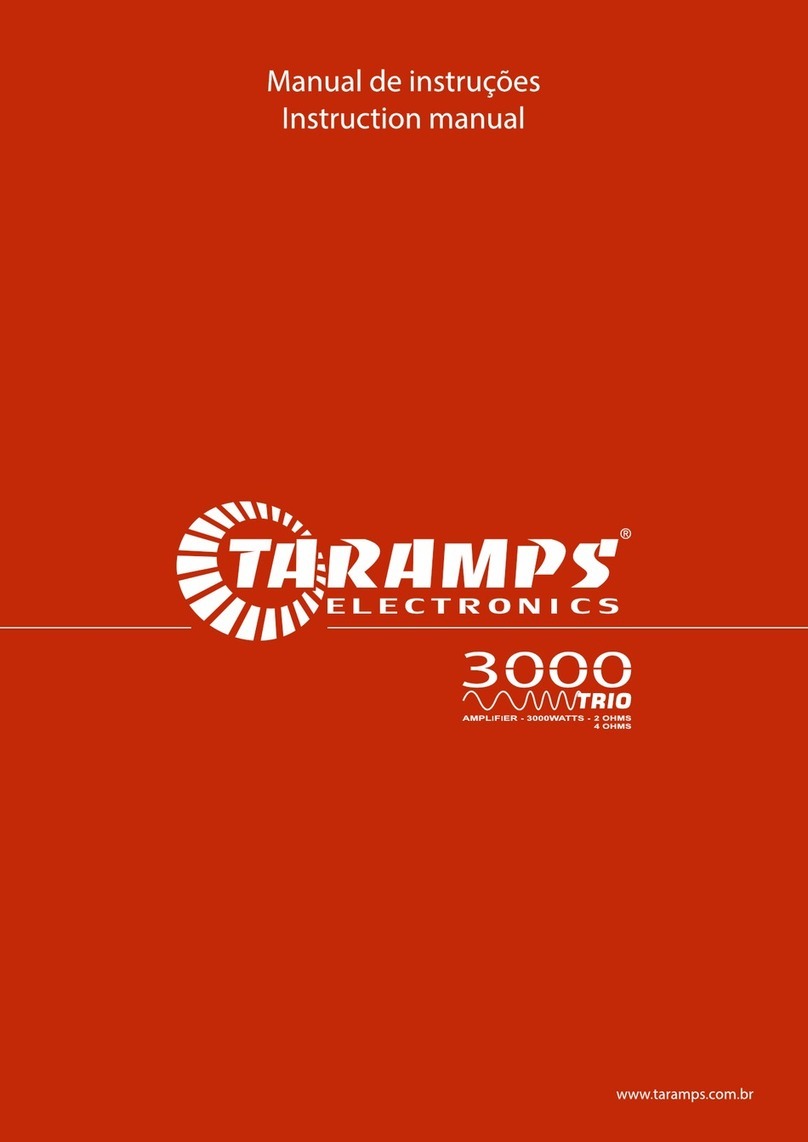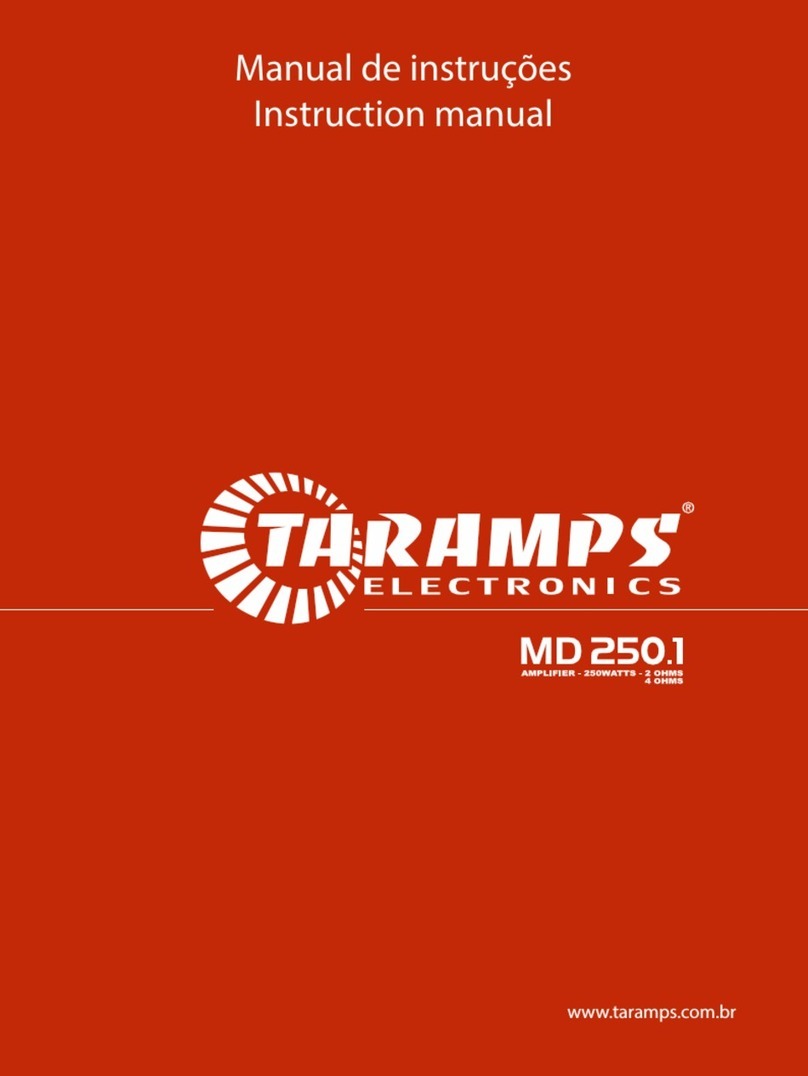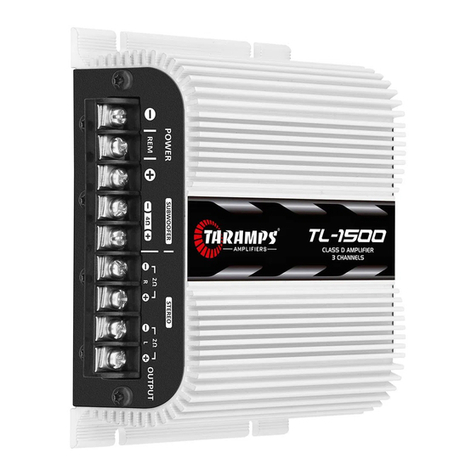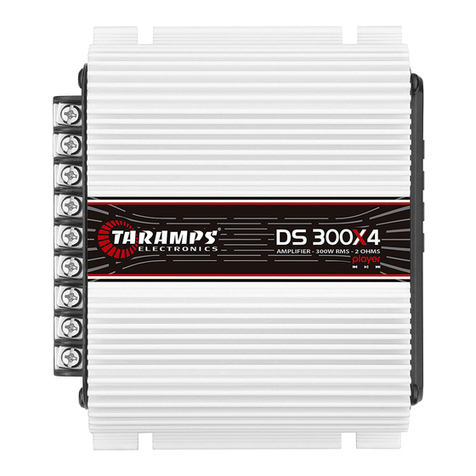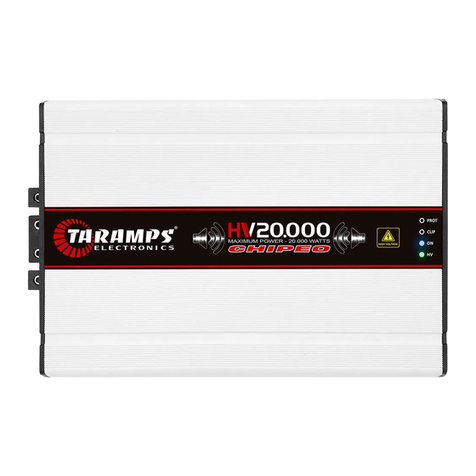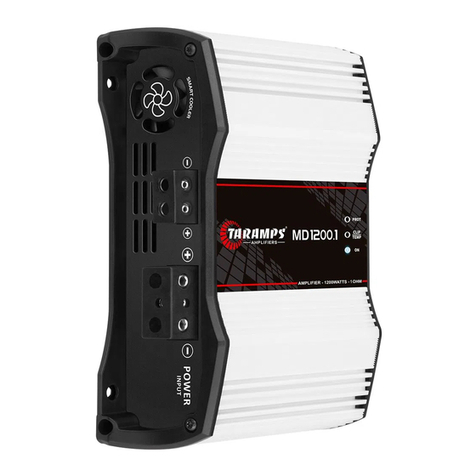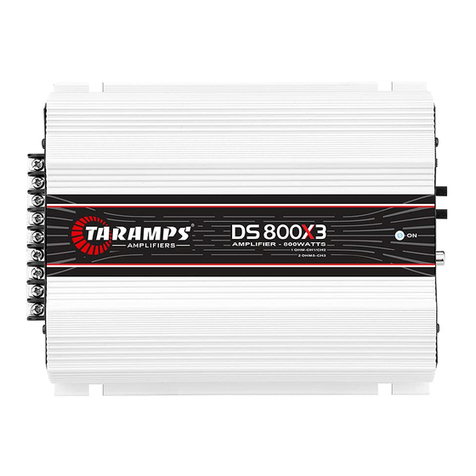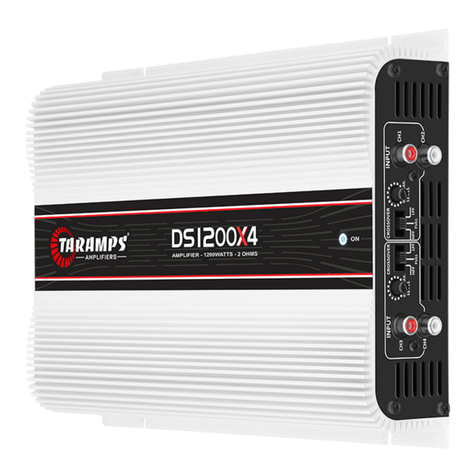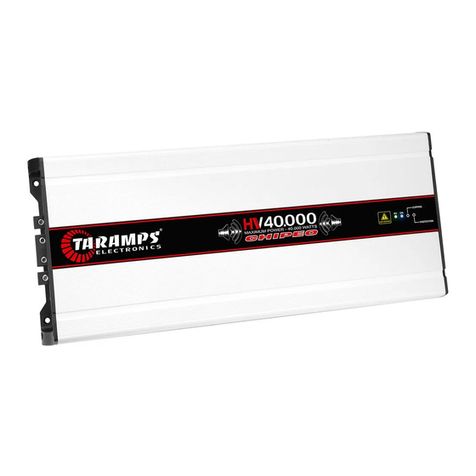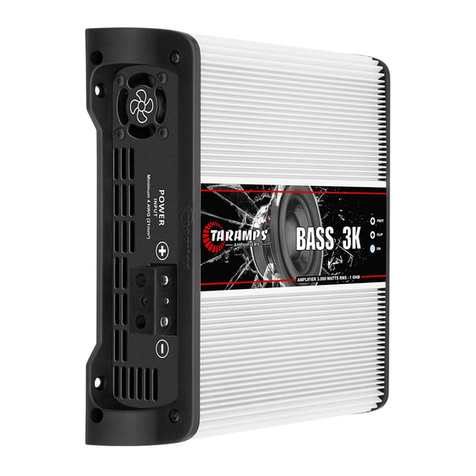01
•Custos de retirada e reinstalação do equipamento,
bem como seu transporte até o posto de assistência
técnica;
•Cartão de garantia não preenchido ou rasurado;
•Danos de qualquer natureza, consequentes de
problemas no produto, bem como perdas causadas
pela interrupção do uso._
•O produto apresentar danos decorrentes de quedas,
impactos ou da ação de agentes da natureza
(inundações, raios, etc.);
A TARAMPS, localizada à Rua Abílio Daguano, 274 Res.
Manoel Martins - Alfredo Marcondes - SP,
Em caso de defeito no período de garantia, a
responsabilidade da TARAMPS limita-se ao conserto
ou substituição do aparelho de sua fabricação.
Esta garantia exclui:
CEP 19.180-000, garante este produto contra defeitos
d e p r o j e t o, f a b r i c a ç ã o, m o n t a g e m e / o u
solidariamente em decorrência de vícios de projeto
que o torne impróprio ou inadequado ao uso a que se
destina, pelo prazo de 12 meses, a partir da data de
aquisição.
•Produtos danificados por instalação incorreta,
infiltração de água, violação por pessoas não
autorizadas;
•Lacre de garantia rasurado ou rasgado;
•Casos onde o produto não seja utilizado em
condições normais;
•Defeitos provocados por acessórios, modificações ou
equipamentos acoplados ao produto;
•Cases in which the product is not used in adequate
conditions;
•Damage of any kind, due to problems in the product, as
well as losses caused by discontinued use of the product.
This warranty excludes:
•Erasured or torn warranty seal;
•Costs involving uninstallation, reinstallation of
equipment as well as shipment to the factory;
•Damaged products by improper installation, water
infiltration, violation by unauthorized individuals;
12 months from the date of purchase. In case of defect
during the warranty period, TARAMPS responsibility is
limited to the repairing or substitution of the device of its
own making.
•Defects caused by accessories, modifications or features
attached to the product;
•The product with damage from falling, bumps or nature
related problems (flooding, lightning, etc.);
•Warranty card is not properly filled or torn;
TARAMPS, located on Abilio Daguano Street 274, Res.
Manoel Martins – Alfredo Marcondes, SP - Brazil, ZIP
CODE 19180-000, guarantees this product against any
defects on terms of project, making, assembling, and/or
with solidarity, due to project vices which cause it
improper or inadequate to its original use within
Índice / Index
TERMO DE GARANTIA / TERM OF WARRANTY
04 • Conector de alimentação
05 • Instalação
10 • Características técnicas
• Bitola de ação e fusível recomendados
• LEDs indicadores e sistema de proteção
01 • Termo de garantia
02 • Introdução
• Recomendações importantes
03 • Funções, entradas e saídas
05 • Installation
• Recommended wire gauge & fuse
•LEDs indicators & protection system
01 • Term of warranty
07 • Introduction
08 • Functions, inputs & outputs
• Key recommendations
10 • Technical features
09 • Power supply connector
